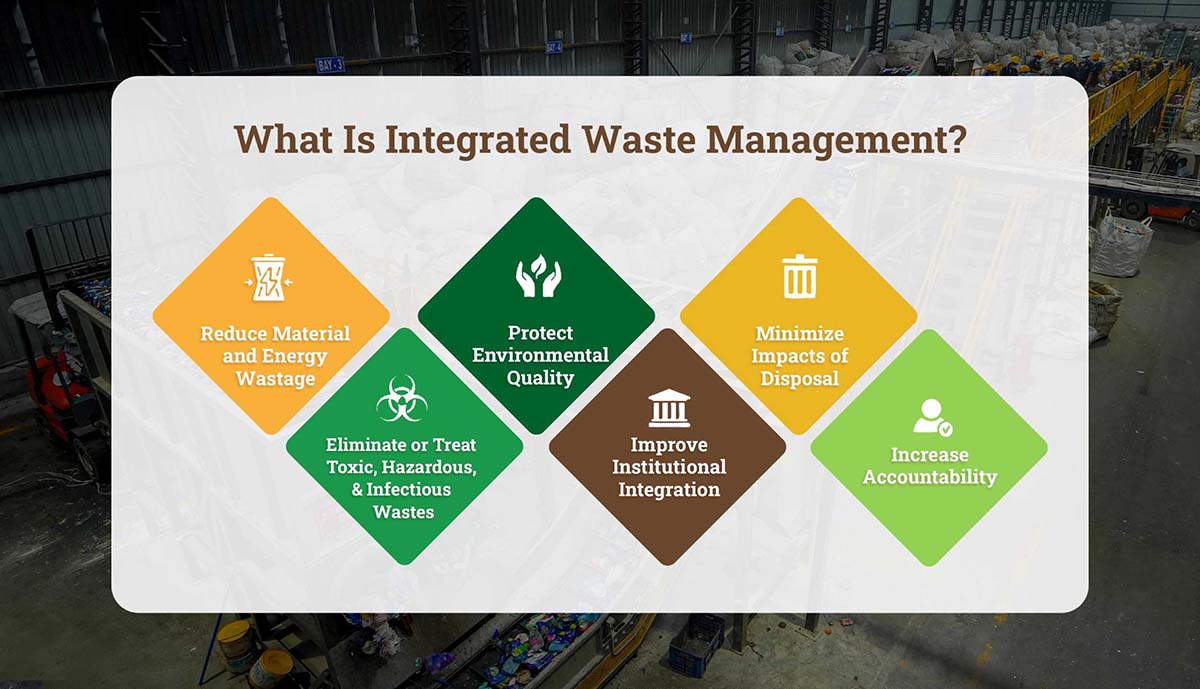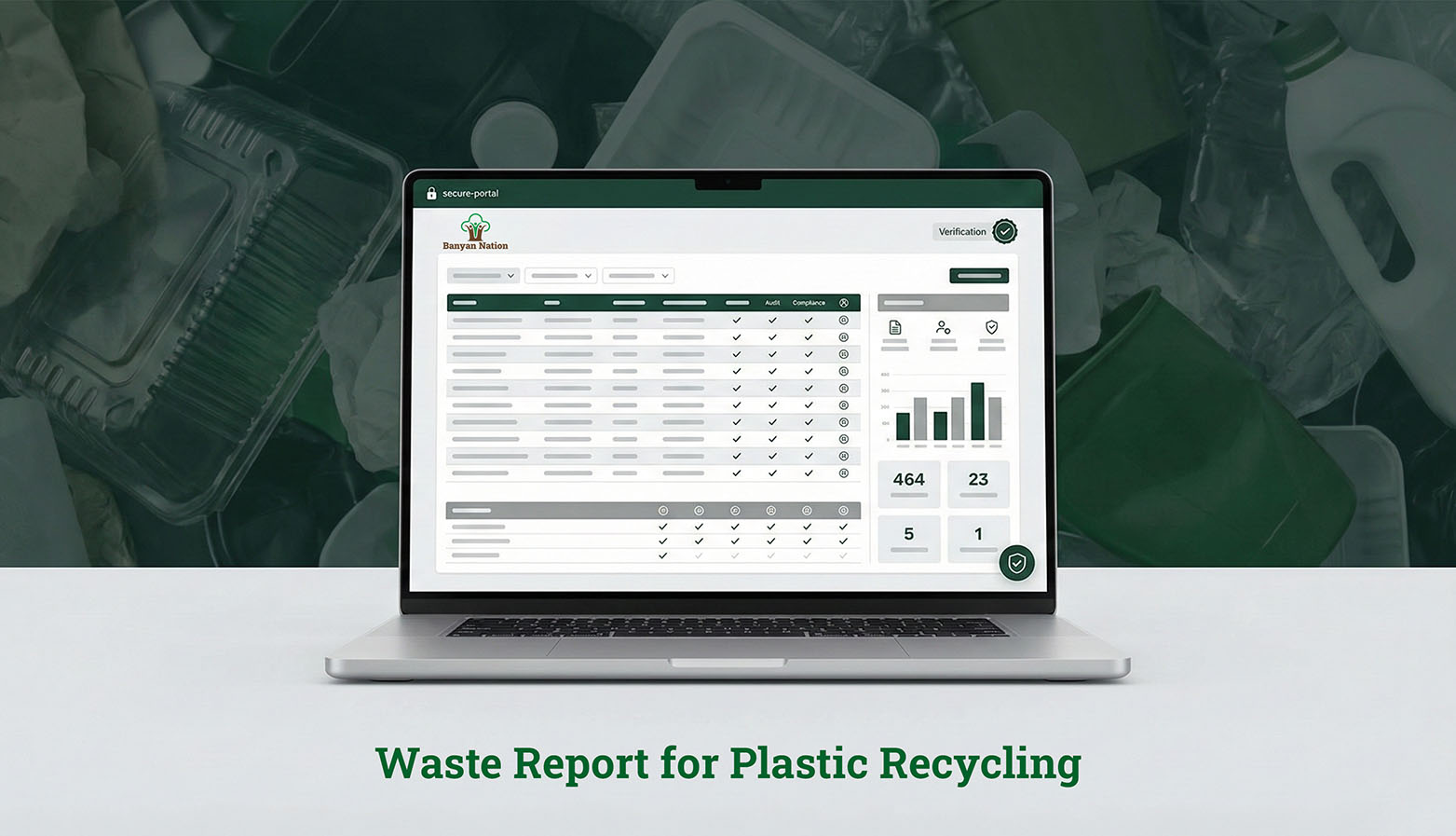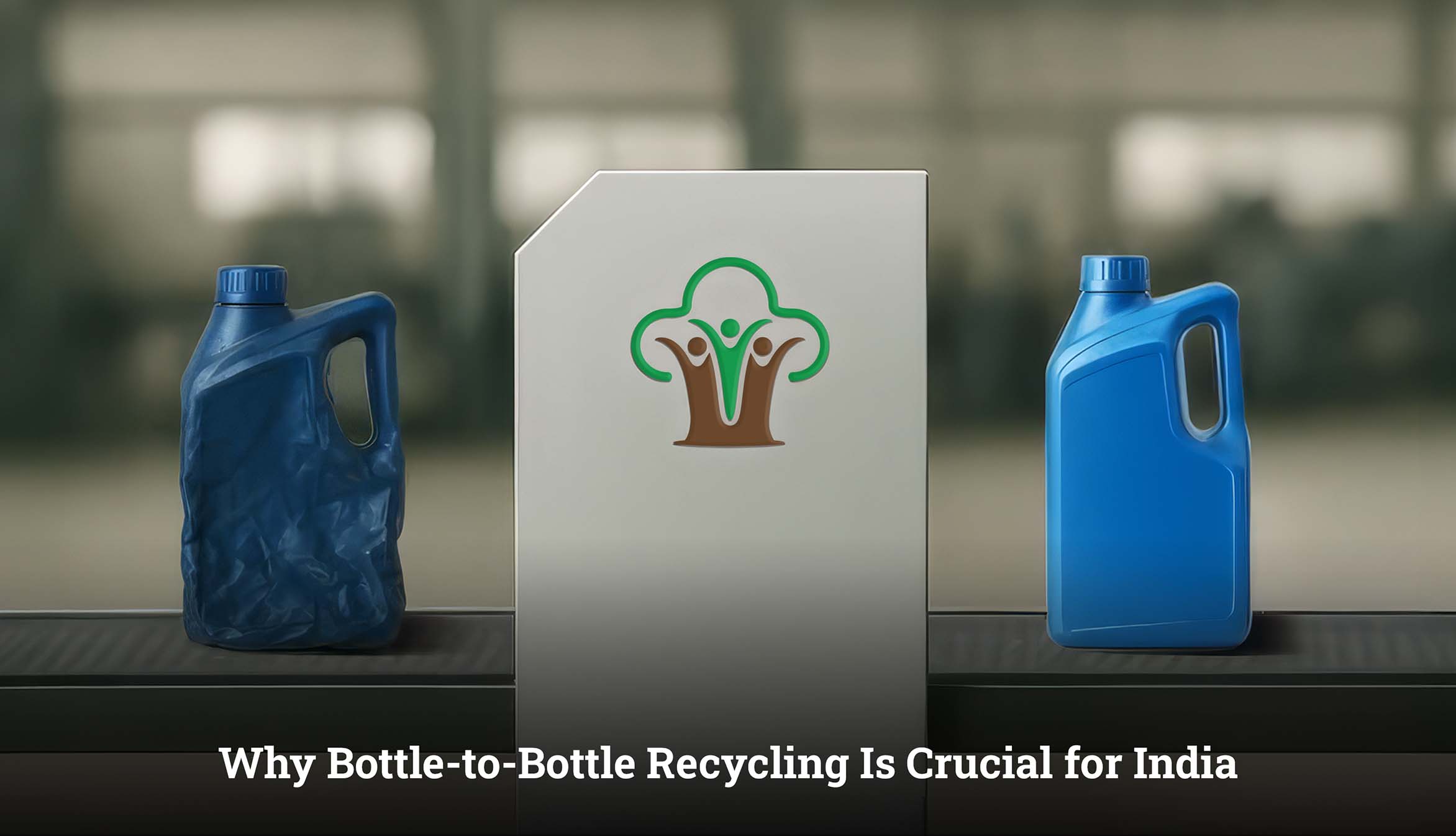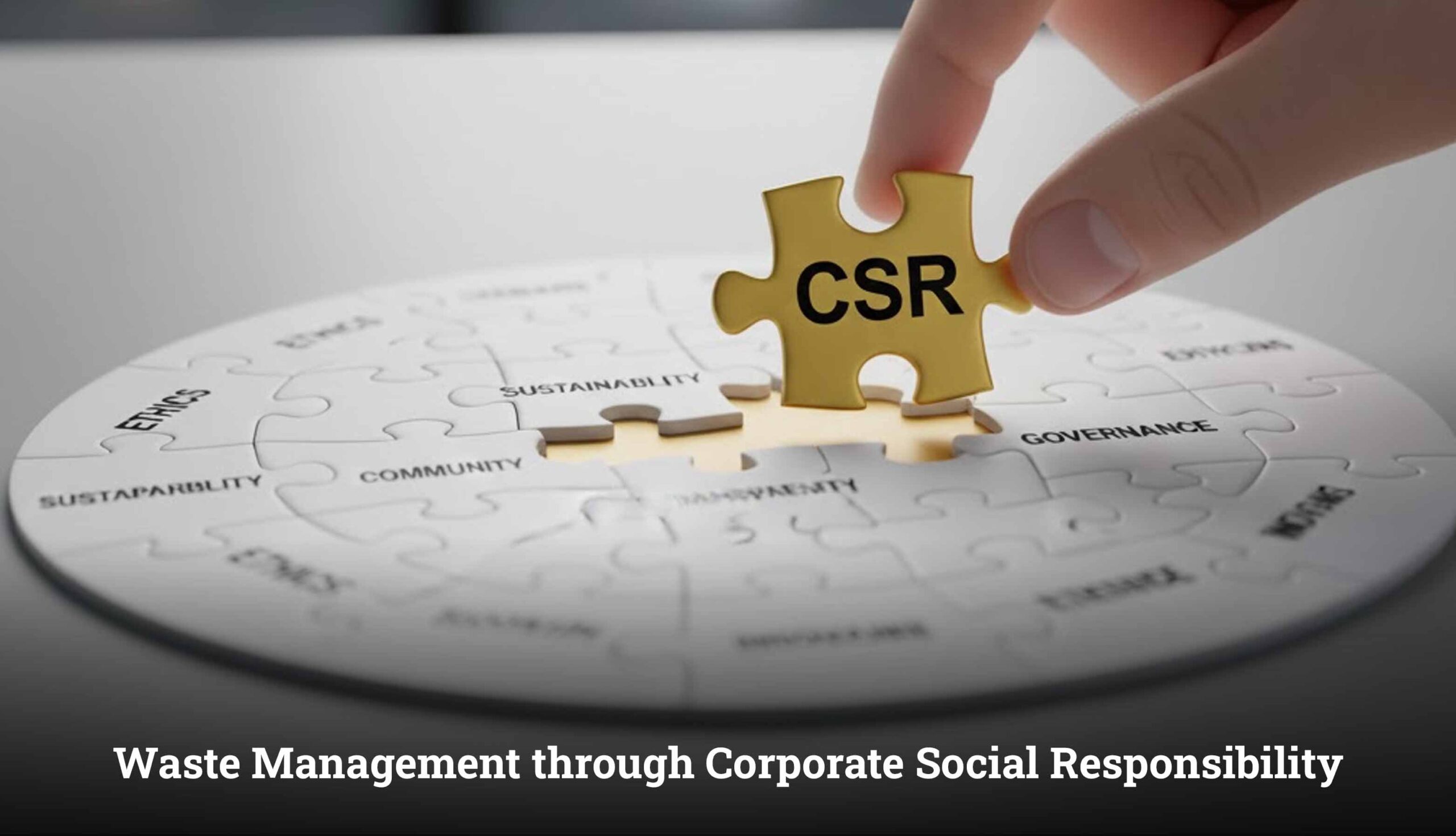The need for an integrated waste management plan in India has been progressively more evident with economic development and the acceleration of urbanization. This drift has caused a substantial rise in waste generation, bearing grave environmental and public health risks. The estimated municipal waste output by the year 2030 would thus increase greatly, thereby urging the need for integrated waste management. A perfect approach is an integrated waste management system aimed at managing the reduction of garbage as much as possible through sound recycling practices rather than managing irresponsible disposal that degrades environmental setups. India’s vision of sustainable development and environmental protection puts greater importance on proper integrated solid waste management. For a cleaner, healthier, and sustainable India with an increasing population, integrated waste management systems must be implemented.
What is Integrated Waste Management?
Integrated waste management is a holistic strategy that integrates different waste management techniques to attain environmental gains, maximize economic resources, and ensure social acceptance. The integrated waste management system involves a series of strategies customized to deal with different wastes efficiently.
- Waste reduction at the source
- Reuse and recycling of materials
- Composting of organic waste
- Incineration with energy recovery
- Sanitary landfilling for residual waste
The primary goal of an integrated waste management plan is to minimize the environmental impact of waste while maximizing resource recovery and Circular Economy efficiency.
Key Components of Integrated Waste Management
The integrated waste management plan in India is contributed by several key constituents such as
1. Waste Collection and Segregation:
Having efficient waste collection infrastructure in place and promoting source segregation of waste into wet (organic) and dry (recyclable) waste.
2. Recycling and Material Recovery
Having facilities for sorting and processing of recyclable waste to recover useful resources and reduce the burden on landfills.
3. Composting and Biomethanation
Setting up plants to convert waste organic matter into compost or biogas. This mitigates greenhouse gas emissions and provides income-generating soil amendments.
4. Waste-to-Energy
Implementing technologies that transform waste material that cannot be recycled into usable forms of energy such as power production and fuel sources.
5. Sanitary Landfill
Developing engineered landfills that handle waste beyond recycling, which remains after recovery steps.
6. Educational Awareness
The implementation of programs that aim to teach people effective waste management methods while developing volunteering opportunities for recycling.
Role of the Government and Policies in Waste Management
- In 2014, the Swachh Bharat Abhiyan launched its mission to enhance waste management and sanitation throughout India.
- Under the Smart Cities Mission of 2015, the government established guidelines to build modern urban environments that prioritize operating well-managed waste disposal systems.
- The Solid Waste Management Rules of 2016 established the framework for municipal solid waste management, which emphasises source separation, segregation, recycling, and scientific disposal.
- Extended Producer Responsibility (EPR) establishes producer accountability through a policy that holds manufacturers responsible for product lifetime operations from design to disposal and recycling phases.
Example of Integrated Waste Management
An integrated waste management example in India can be seen in cities like Indore, which has consistently ranked as the cleanest city in the country. Indore’s integrated solid waste management system incorporates:
Door-to-door collection of segregated waste
Centralized and decentralized composting facilities
Material recovery facilities for recyclables
Waste-to-energy plants for non-recyclable waste
Scientific landfills for residual waste
Extensive public awareness campaigns
This comprehensive, integrated solid waste management approach has not only improved the city’s cleanliness but also generated employment opportunities and reduced environmental pollution.
Conclusion
India requires integrated waste management systems as a solution to rising waste management difficulties throughout the country. The approach marries diverse tactics to environment-friendly strategies through means that both protect the environment while preserving resources for future reuse. Indian society will require integrated waste management solutions to build a healthier ecological future with cleaner environments during ongoing development and urbanization growth.
FAQ's
What are the 4 rules of waste management?
The 4 R’s of waste management are:
- Refuse: Avoid unnecessary waste generation
- Reduce: Minimize waste production
- Reuse: Find new purposes for items
- Recycle: Convert waste into new products
What is integrated waste management? Describe an example of its use.
Integrated waste management is a comprehensive approach that combines various strategies to manage waste effectively. An example is Indore’s waste management system, which includes segregated waste collection, composting, recycling, waste-to-energy conversion, and scientific landfilling.
What are the main challenges in implementing Integrated Waste Management?
The main challenges include:
- Lack of public awareness and participation
- Insufficient infrastructure and technology
- Limited financial resources
- Inadequate enforcement of regulations
- Difficulty in managing diverse waste streams
- Resistance to change from traditional waste management practices


 What Is Waste Reporting and Why Does It Matter in Plastic Recycling?
What Is Waste Reporting and Why Does It Matter in Plastic Recycling? What Is Bottle-to-Bottle Recycling? Why It Matters for India
What Is Bottle-to-Bottle Recycling? Why It Matters for India The Role of CSR (Corporate Social Responsibility) in Waste Management
The Role of CSR (Corporate Social Responsibility) in Waste Management What is Takeback Program & Their Role in Building a Circular Economy
What is Takeback Program & Their Role in Building a Circular Economy What Is a Waste Audit and Why Should Recycling Companies Conduct One?
What Is a Waste Audit and Why Should Recycling Companies Conduct One?

